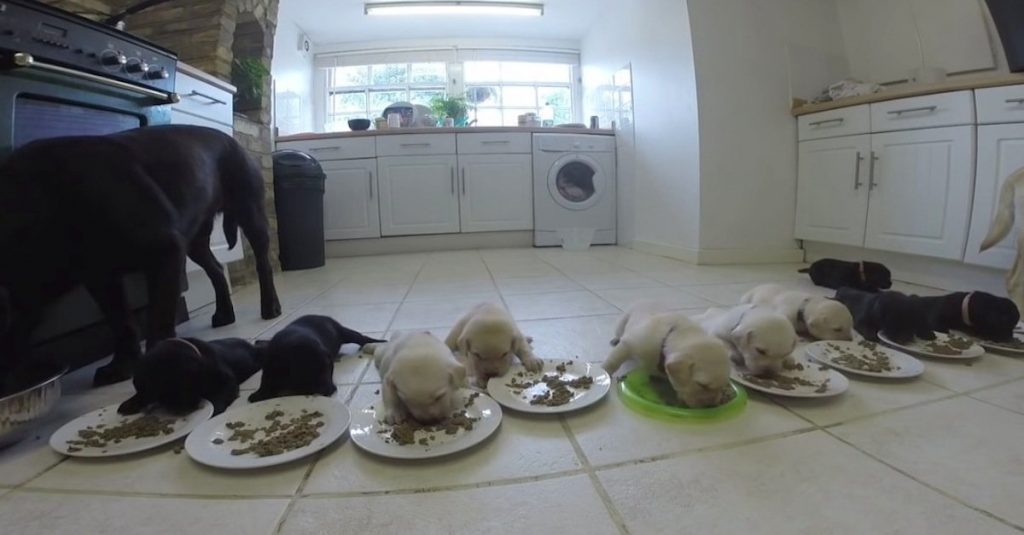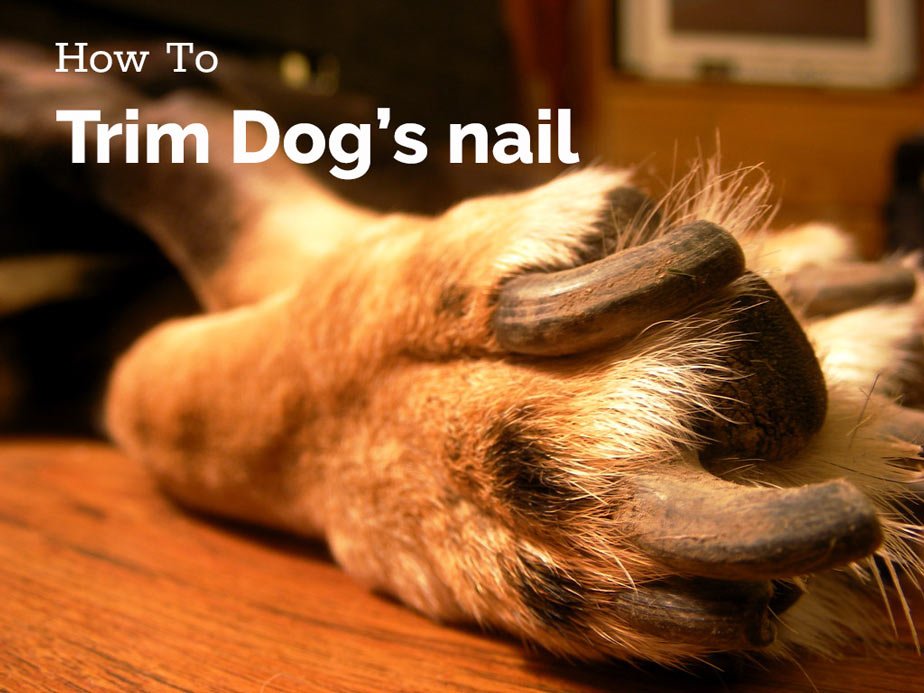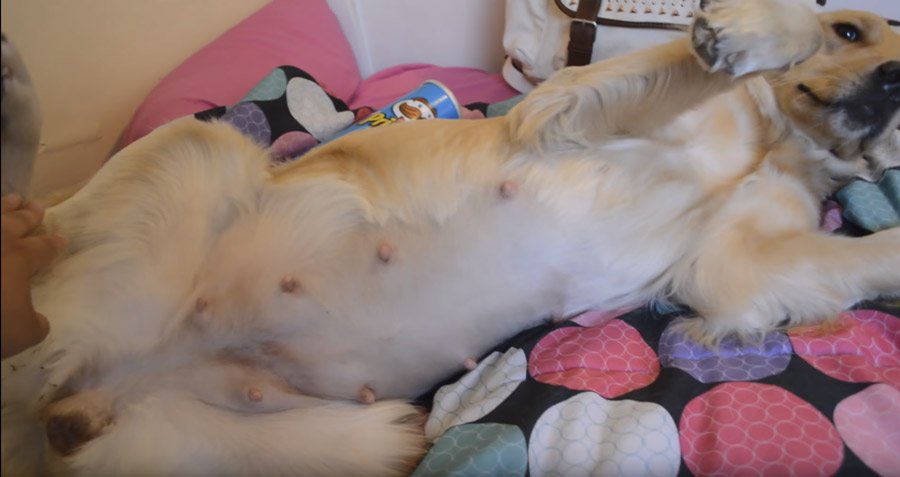Timing and method of weaning are crucial to a puppy’s physical and emotional development. As with weaning babies, correctly weaning puppies results in healthier, more socially adapted offspring.
Contents
When to Wean
Whether the puppy is an orphan or part of a suckling litter, weaning should start at around three weeks of age.
See also:
By this stage, puppies are already becoming more mobile and less reliant on their mother. Likewise, their mother may already be irritated with nursing her puppies, especially if they are developing sharp teeth!
Give Young Puppies a Head Start
Use the weaning process as an opportunity to socialize the puppies with humans through gentle physical contact. Young puppies respond well to careful handling and are more likely to develop into sociable, well-disciplined members of your household!
Puppy Weaning Strategy
The following three-step approach can help you wean puppies within a week. Ideally, puppies should be fed at least four times a day (with each session lasting about 15 minutes) during the weaning process.
By the end of the week, the puppies will be eating independently. But be warned, weaning is a messy business, so be prepared!
Puppy Weaning 3-Stage Plan
Stage 1 (puppies 3 weeks old) what to feed puppies at 3 weeks?
- Use dry food cereal specially formulated for weaning young puppies. Mix one cup of dry cereal with one cup of evaporated or goat’s milk to form a fairly thin gruel. Add warm water, if required, to achieve the correct consistency. Cow’s milk should be avoided because puppies cannot digest it.
- Allocate an eating area near the puppies’ basket. Start with a quarter of a cup of mix in separate saucers for each puppy. Nestle each pup, in turn, on your lap and drizzle the food across the puppy’s mouth with your finger. Then encourage the puppy to eat from the saucer. Time the puppies’ first feed for late evening; both mother and puppies will have a better night’s sleep as a result.
- Repeat the feeding process the following morning. For the evening meal on the second day, introduce a larger communal food bowl and encourage puppies individually to feed on the bowl. If the pups vary in size or the litter is too large, provide a second food bowl so that the weaker or smaller puppies are not bullied.
Stage 2
- After two full days of just baby cereal, start introducing small quantities of other top quality dry food or wet food designed for weaning. Use a food processor to reduce the dry food to a fine consistency. Combine half a cup of formula puppy food with half a cup of cereal, adding more warm water, if necessary. Feed the pups in a separate area away from the mother.
- Over the next two days, gradually increase the amount of puppy food and decrease the cereal content correspondingly. The aim is to get the puppy on puppy food entirely after two full days of this regimen.
Stage 3
- Once the puppies have been feeding on ground dog food alone at least two days, start preparing the mix with water instead of evaporated milk or goat’s milk.
- Stop grinding the dog food as finely when the puppies are approximately one week into weaning. Make the transition to rougher ground food over the course of three or four feeds.
- When weaning is complete, puppies require approximately half a cup of food per feeding. Portions of wet food will depend largely on the breed and appetite of the puppies. On average, puppies that are ready for homing (approximately eight weeks old) consume three quarters to one cup of food per mealtime. Young dogs, up to the age of five or six months, should be fed at least three times per day. Thereafter dogs should be fed twice daily.
Feeding a Nursing Dog
A nursing dog should be fed four times a day to ensure that her body is not depleted of essential nutrients. While the frequency of feeding increases, the portions should be decreased from her normal twice a day food allocation.
Towards the end of the first week of weaning, reduce the mother’s feeds to three per day. A few days later, provided that all is going well with the weaning process, the mother can return to two meals per day.
A Word of Warning about Weaning
Weaning is not always plain sailing, particularly when the mother does not instinctively “let go” of her suckling puppies. If the mother appears clingy or anxious, you will need to extend the weaning period and proceed with caution.
Also, check the mother for possible infection or inflammation of the mammary glands. Mother dogs who continue nursing past the three-week period will likely display inflamed or cracking nipples.
Puppy Nutrition and Early Stages of Development
Correct puppy nutrition is particularly important during the weaning period and phases of active growth. Monitor your puppy’s development and weight gain carefully.
Puppy Nutrition and Average Growth Rates
Up to the age of five months, a puppy usually gains between two and four grams per day/per kilogram of anticipated average adult weight for that breed.
Tips for Puppy Nutrition
Here are some further general tips to help you ensure that your puppy is receiving proper nutrition:
- Purchase dry food and wet food for your puppy from a specialist pet store. The protein content of between 25 and 30 percent is ideal.
- Search for pet foods approved by the Association of American Feeding Control Officials (AAFCO).
- Do not over-feed your puppy. Consult your vet about your dog’s ideal weight and food requirements.
- Do not give your puppy vitamins and minerals meant for human beings. Some commercial nutritional supplements can be harmful to puppies or toxic if fed in high doses.


 Getting a puppy at 6 weeks – Raising & care
Getting a puppy at 6 weeks – Raising & care How To Trim Dog’s Nails That are Overgrown
How To Trim Dog’s Nails That are Overgrown What to Do if Your Dog is Pregnant [Step By Step]
What to Do if Your Dog is Pregnant [Step By Step] Ultimate Guide to Choose Dog Clipper Blades
Ultimate Guide to Choose Dog Clipper Blades Ultimate Guide to Take Care of An 8 Week Old Puppy
Ultimate Guide to Take Care of An 8 Week Old Puppy
Leave a Reply